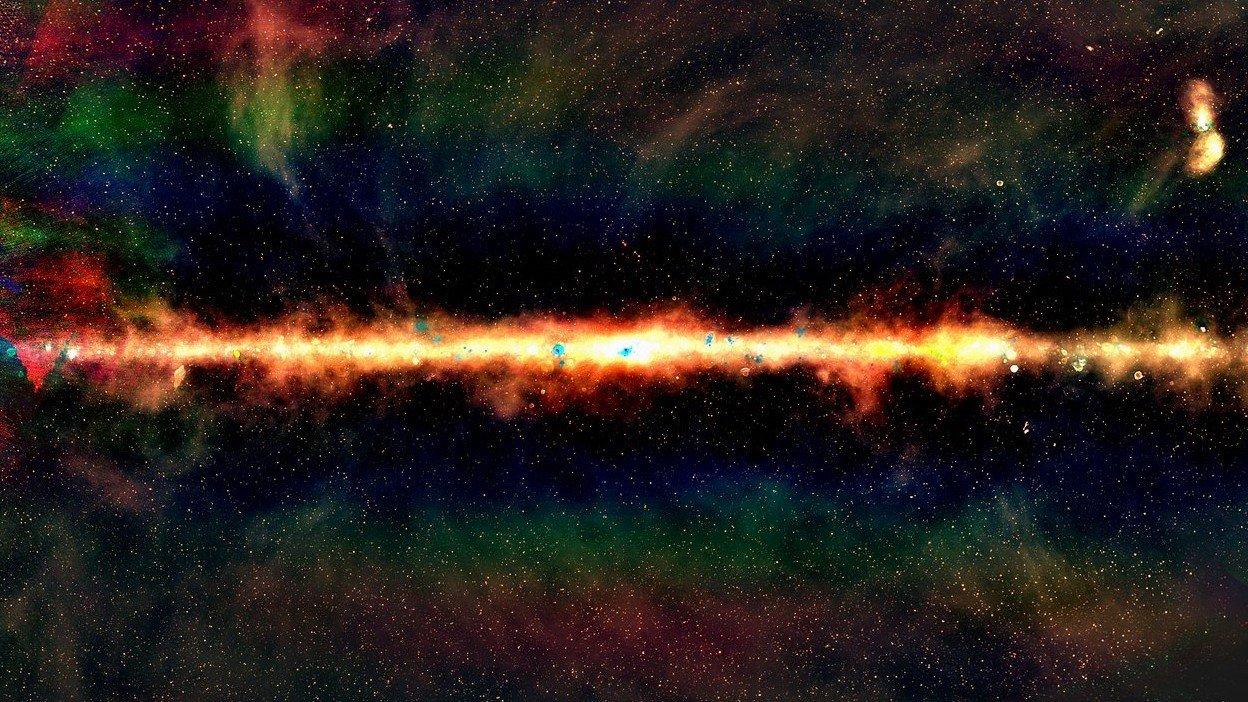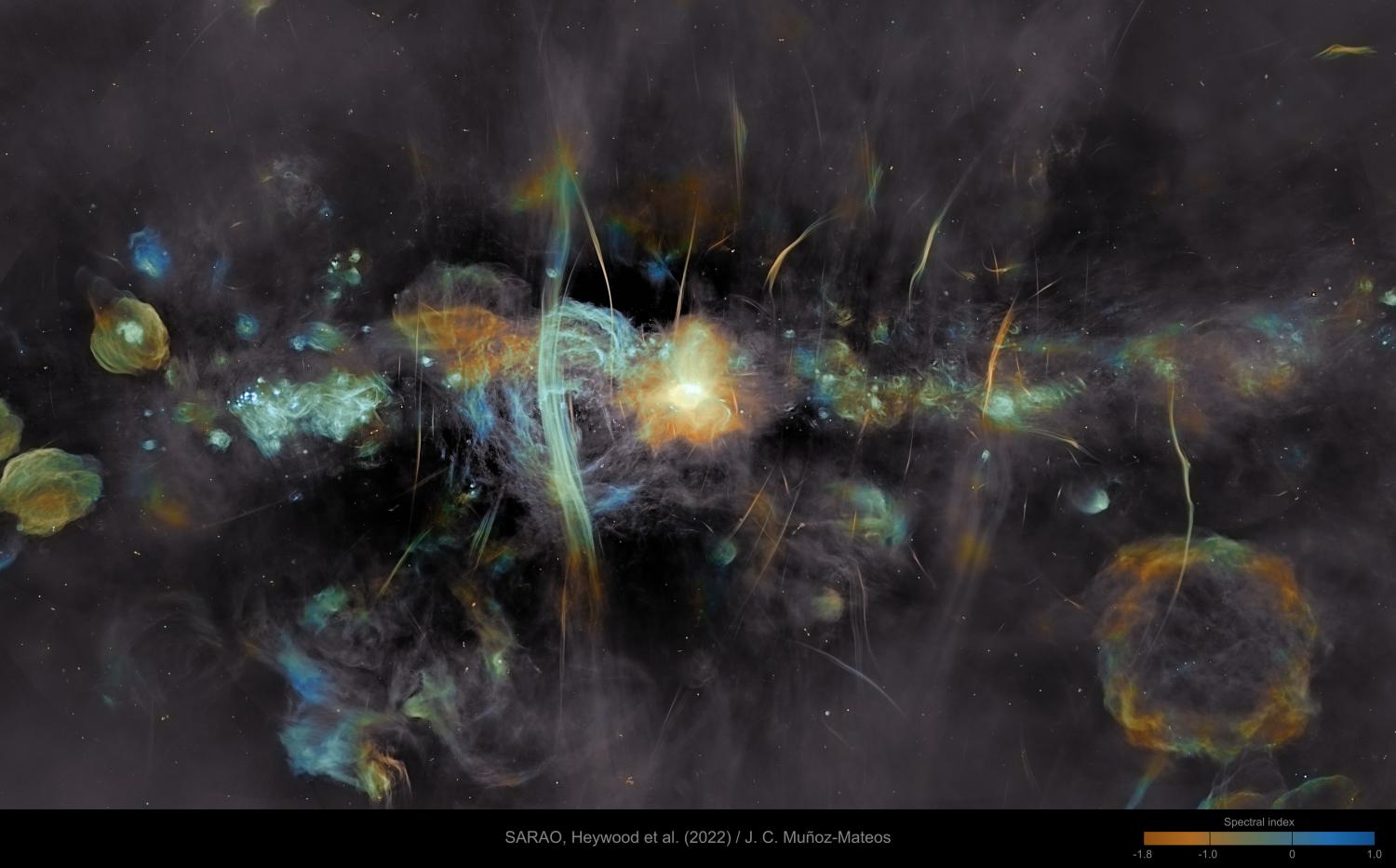Our home galaxy
At a glance
- Our galaxy provides us with the most detailed information on individual stars, allowing us to trace the entire sequence of stellar evolution from birth to death
- It also gives us a uniquely detailed view of the interstellar medium - the gas and dust in between stars - which is the key to understanding both star formation and evolution
- The galactic centre harbours the closest supermassive black hole to us, allowing us to study its extreme environment in detail, including its impact on galaxy evolution

Our home galaxy, the Milky Way, provides astronomers with a unique laboratory on our cosmic doorstep. We can use it to address science questions on galactic scales. Its proximity allows us to observe it with unparalleled resolution and sensitivity when compared with observations of more distant galaxies.
Radio telescopes are creating ever-more-detailed images of the centre of the galaxy, an area packed with stars and where a supermassive black hole lies. That has been particularly evident in recent years, with striking new views of the galactic centre coming from SKA precursor radio telescopes including MeerKAT in South Africa and MWA in Australia.
The life cycle of stars
How are stars formed, how do they evolve and what happens when they die? The Milky Way is the most accessible laboratory in which to study the entire sequence of stellar evolution from birth to death, and many different aspects of the lifecycle can be studied across radio frequencies. The SKA telescopes will enable detailed observations of thousands of stellar sources, helping us to build evolutionary paths for different types of stars, and in turn allowing us to make predictions on how a single star and groups of stars will evolve. Such studies will also show how star formation is distributed across the galaxy, creating a detailed picture of its stellar make up.
The space between stars is filled with gas and dust, known as the inter-stellar medium (ISM). The ISM is a key aspect of our understanding of stellar evolution and the associated life cycle of gas and dust, which includes us! Studying the ISM at radio wavelengths can tell us about this life cycle, including the chemical elements dispersed by stars and how new stars are formed.

The galactic centre
In recent years, radio telescopes have given us a new understanding of the galactic centre with striking images like the one above from South Africa's MeerKAT telescope.
The galactic centre harbours the closest supermassive black hole, known as Sagittarius A*, which has more than four million times the mass of our Sun. Its environment is the most extreme that we can study, allowing us to obtain a better picture of its impact on galactic evolution, as well as to test fundamental physics like general relativity.
Radio observations are unique in allowing us to observe this region clearly, because radio waves can travel through the dense gas and dust clouds that obscure the galactic centre at other wavelengths.
Open questions
Despite the fact that our galaxy has been studied for decades many important open questions still remain. The SKA telescopes will allow us to study the Milky Way at a level of detail that will remain unmatched in observations of distant galaxies, providing an important benchmark for many science questions. In addition, astronomers will aim to answer fundamental questions like the origin of cosmic rays, and the role of magnetic fields in galaxy evolution.




